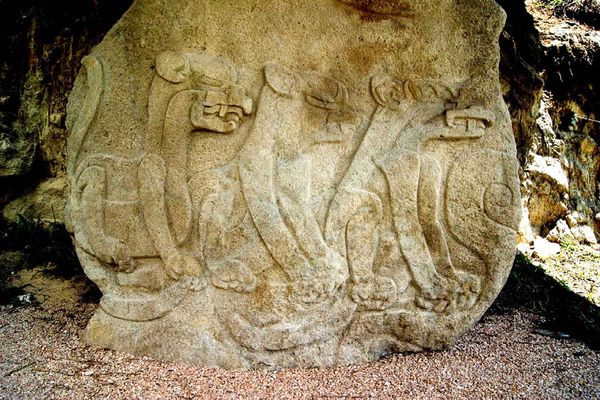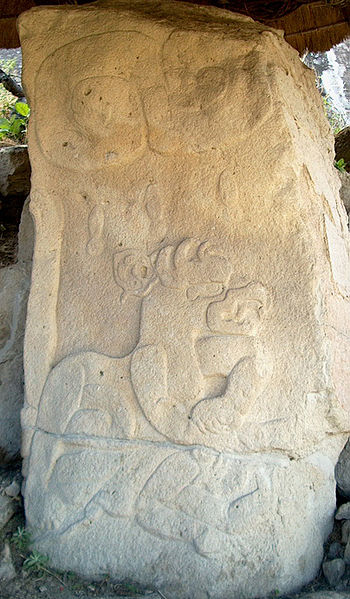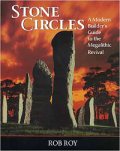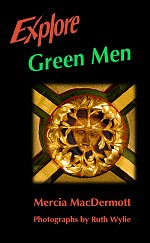<< Our Photo Pages >> Chalcatzingo - Rock Art in Mexico in Morelos
Submitted by Andy B on Tuesday, 20 September 2011 Page Views: 8346
Rock ArtSite Name: ChalcatzingoCountry: Mexico
NOTE: This site is 25.213 km away from the location you searched for.
Region: Morelos Type: Rock Art
Latitude: 18.677420N Longitude: 98.770658W
Condition:
| 5 | Perfect |
| 4 | Almost Perfect |
| 3 | Reasonable but with some damage |
| 2 | Ruined but still recognisable as an ancient site |
| 1 | Pretty much destroyed, possibly visible as crop marks |
| 0 | No data. |
| -1 | Completely destroyed |
| 5 | Superb |
| 4 | Good |
| 3 | Ordinary |
| 2 | Not Good |
| 1 | Awful |
| 0 | No data. |
| 5 | Can be driven to, probably with disabled access |
| 4 | Short walk on a footpath |
| 3 | Requiring a bit more of a walk |
| 2 | A long walk |
| 1 | In the middle of nowhere, a nightmare to find |
| 0 | No data. |
| 5 | co-ordinates taken by GPS or official recorded co-ordinates |
| 4 | co-ordinates scaled from a detailed map |
| 3 | co-ordinates scaled from a bad map |
| 2 | co-ordinates of the nearest village |
| 1 | co-ordinates of the nearest town |
| 0 | no data |
Internal Links:
External Links:
I have visited· I would like to visit
Andy B has visited here

Chalcatzingo provides unique and interesting examples of Olmec-style art and architecture.
The village contained a central plaza area, designated Terrace 1, downhill from elite residences. Terrace 25 is composed of a sunken patio of a style seen at Teopantecuanitlan. In the center of this sunken patio is a tabletop altar reminiscent of those at La Venta and San Lorenzo Tenochtitlán, both lowland Olmec centers.
Structure 4 is Chalcatzingo’s largest structure, an almost-square platform measuring approximately 70 m (230ft) on each side. Burials of high-status individuals have been excavated here, with jade ornaments and a magnetite (iron ore) mirror. Most of the village's burials were located under the floors of houses—individuals representing the whole variety of social statuses were buried this way.
Chalcatzingo is perhaps most famous for its bas-relief carvings. Most of the 31 known monuments occur in three distinct groupings: two on Cerro Chalcatzingo and the third on the terraces within the actual settlement.
Drawings of these carvings have been made, but molds were taken of many of them before any drawings were taken. The process of making those molds tended to destroy fine lines and actually tore small portions of the stone out.
Monument 1 (El Rey) and the "Water Dancing Group"
The first group of reliefs lies high on the hillside of Cerro Chalcatzingo. Their apparent common theme of rain and fertility has led Kent Reilly to name this the Water Dancing Group.
This group is dominated by the best known carving from Chalcatzingo: Monument 1, also known as "El Rey" (The King). "El Rey" is a life-size carving of a human-like figure seated inside a cave with a wide opening. The point of view is from the side, and the entire cave appears cross-sectional, with the cave entrance is seen to the right of the figure. The cave entrance is as tall as the figure, and scroll volutes (perhaps indicating speech or perhaps wind) are issuing from it. The cave in which the figure sits is equipped with an eye, and its general shape could suggest that of a mouth.
Above the cave are a number of stylized objects which have been interpreted as rain clouds, with exclamation-like objects ("!") appearing to fall from them. These have been generally interpreted as raindrops.
The seated figure, "El Rey", is dressed ornately. He or she is seated on an elaborate scroll holding another scroll. Since this carving is situated above a major natural water channel that once supplied water to Chalcatzingo, the scene has been interpreted as a leader using his power to bring water to the region. However, "El Rey" has also variously been identified as a rain deity, the "God of the Mountain" - a forerunner of the Aztec's Tepeyollotl, or as the jaguar god who inhabits the caves.
In addition to "El Rey", the Water Dancing Group includes five smaller bas-reliefs, all depicting various saurian-like creatures sitting atop scrolls underneath exclamation-like objects (again most likely raindrops) falling from what appear to be clouds. These five bas-reliefs—Monuments 5/6, 8, 11, 14, and 15—stretch eastward from Monument 1, separated from it by Cerro Chalcatzingo’s primary natural water channel. These bas-reliefs can only be viewed sequentially, which leads some researchers to suggest that they are likely a pictorial or processional sequence.
The second group
The second group also consists of bas-reliefs, but they have been carved upon the loose stone slabs and boulders at the foot of the mountain rather than on the mountainside. They are larger than those of the Water Dancing group (all but "El Rey") and the carvings primarily depict fantastic creatures dominating outlined human figures:
Monument 31, showing a beaked feline zoomorph atop a recumbent human. Note the 3 stylized raindrops apparently falling from a "Lazy S" figure.
Monument 5 depicts a reptilian creature, perhaps the archetypical Mesoamerican feathered serpent, devouring (or, less likely, disgorging) a human. The creature has an elongated snout with large fangs, and triangular markings towards its tail as well as what appear to be fins or wings.
Monument 4 depicts two humans being attacked by two felines. The human figures are under and slightly in front of the felines, indicating that they may have been fleeing. The felines have their fangs bared and claws extended towards the figures. The felines appear to be wearing various bits of ornamentation, while their eyes show the St Andrew's Cross ("X") motif, suggesting these might be jaguar gods or that these jaguars are affiliated with the sun god.
Monument 3 depicts a recumbent feline next to a cactus-like plant, with a possible subordinate human figure in a damaged area of the carving.
Monument 31 depicts a recumbent feline atop a human, perhaps attacking him, although this carving does not possess the sense of motion shown in Monument 4. Three raindrops, like those in El Rey, can be seen falling from above. Interpretations of this scene range from the idea that raindrops falling on the jaguar comprise a fertility metaphor to themes of bloodletting and sacrifice.
According to UIUC archaeologist David Grove, these four reliefs likely illustrate "a sequence of mythical events important in the cosmogony of the peoples of Chalcatzingo".
Monument 2, at the west end of the series, shows four humans. Three of them are standing while the fourth, on the right, is seated upon the ground, inertly slumped backwards, perhaps bound. All are masked, although the fourth has his mask on the back of his head. The three standing figures are brandishing spears or pikes. The headdress worn by one of the standing figures echoes the motifs adorning the head of one of Monument 4’s felines, suggesting that this scene is related to the events depicted in the others in the sequence.
While these first five occur in a processional arrangement, a sixth carving of this group, labelled Monument 13, is considerably downhill. It depicts a supernatural anthropomorphic being with the cleft head often found in Olmec iconography. Like "El Rey", it is seated within the quatrefoil mouth of what is likely a supernatural creature.
Other carvings
Monument 9 is a sculpture that may represent the cave in Monument 1 from a head-on point of view. The sculpture is flat and contains a large hole in the middle that would correspond to the shape of the cave entrance. Above that hole are two eyes, similar to the eye in Monument 1.
Chalcatzingo contains what may be the earliest representation of a woman in Mesoamerican monumental art on Monument 21. The monument is a stela, and depicts a woman dressed in sandals, a skirt, and a head covering. She is holding a bundle tied with bands. This image possibly represents a woman with her marriage dowry.
Source: Wikipedia
Note: "Spectacular" Three-Cat Monolith Unearthed in Mexico
You may be viewing yesterday's version of this page. To see the most up to date information please register for a free account.

Do not use the above information on other web sites or publications without permission of the contributor.
Nearby Images from Flickr






The above images may not be of the site on this page, but were taken nearby. They are loaded from Flickr so please click on them for image credits.
Click here to see more info for this site
Nearby sites
Click here to view sites on an interactive map of the areaKey: Red: member's photo, Blue: 3rd party photo, Yellow: other image, Green: no photo - please go there and take one, Grey: site destroyed
Download sites to:
KML (Google Earth)
GPX (GPS waypoints)
CSV (Garmin/Navman)
CSV (Excel)
To unlock full downloads you need to sign up as a Contributory Member. Otherwise downloads are limited to 50 sites.
Turn off the page maps and other distractions
Nearby sites listing. In the following links * = Image available
50.0km NW 316° Tepoztlan* Ancient Village or Settlement
55.2km WNW 301° Cuernavaca - Piramide de Teopanzolco* Pyramid / Mastaba
57.1km WNW 284° Xochicalco* Ancient Village or Settlement
65.0km NE 49° Cholula* Pyramid / Mastaba
74.6km WSW 243° Xihuatoxtla Cave or Rock Shelter
77.0km NE 35° Xochitecatl* Pyramid / Mastaba
77.3km NE 35° Cacaxtla* Ancient Village or Settlement
79.7km NNW 329° Tlalpan Ancient Village or Settlement
81.8km NNW 328° Cuicuilco* Pyramid / Mastaba
91.3km N 357° Texcotzingo* Ancient Palace
92.4km NNW 336° Tenochtitlan - Templo Mayor* Ancient Temple
94.1km NNW 332° Museo Nacional de Antropología* Museum
94.3km NNW 336° Tlatelolco* Ancient Village or Settlement
99.2km WNW 299° Teotenango* Ancient Temple
103.8km NNW 336° Tenayuca* Pyramid / Mastaba
106.1km NNW 337° Acatitlan* Ancient Temple
111.1km E 93° Teteles de Santo Nombre* Ancient Village or Settlement
112.0km N 356° Teotihuacan - Temple of Quetzalcoatl* Pyramid / Mastaba
112.8km N 356° Teotihuacan - Tetitla Ancient Village or Settlement
113.1km N 356° Teotihuacan - Atelelco* Ancient Palace
113.1km N 356° Teotihuacan - Pyramid of the Sun* Pyramid / Mastaba
113.2km N 356° Teotihuacan* Ancient Village or Settlement
113.9km N 356° Teotihuacan - Pyramid of the Moon* Pyramid / Mastaba
114.3km WNW 295° Nevado de Toluca Natural Stone / Erratic / Other Natural Feature
128.3km N 10° Tepeapulco Pyramid* Pyramid / Mastaba
View more nearby sites and additional images






 We would like to know more about this location. Please feel free to add a brief description and any relevant information in your own language.
We would like to know more about this location. Please feel free to add a brief description and any relevant information in your own language. Wir möchten mehr über diese Stätte erfahren. Bitte zögern Sie nicht, eine kurze Beschreibung und relevante Informationen in Deutsch hinzuzufügen.
Wir möchten mehr über diese Stätte erfahren. Bitte zögern Sie nicht, eine kurze Beschreibung und relevante Informationen in Deutsch hinzuzufügen. Nous aimerions en savoir encore un peu sur les lieux. S'il vous plaît n'hesitez pas à ajouter une courte description et tous les renseignements pertinents dans votre propre langue.
Nous aimerions en savoir encore un peu sur les lieux. S'il vous plaît n'hesitez pas à ajouter une courte description et tous les renseignements pertinents dans votre propre langue. Quisieramos informarnos un poco más de las lugares. No dude en añadir una breve descripción y otros datos relevantes en su propio idioma.
Quisieramos informarnos un poco más de las lugares. No dude en añadir una breve descripción y otros datos relevantes en su propio idioma.